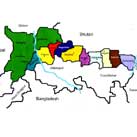Continuance of Declaration on Disturbed Area in Nagaland is a Decision based on Perception without Foresight
The declaration of the Disturbed Area provision is fundamentally at odds with the mutually accommodative integration endeavour of the Nagas with the Indian Union as envisioned in the 2015 framework agreement.
- Gautam Sen
- January 16, 2018












